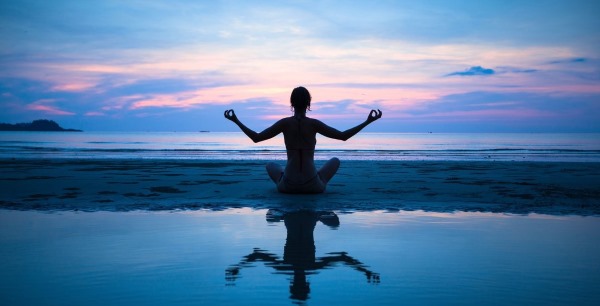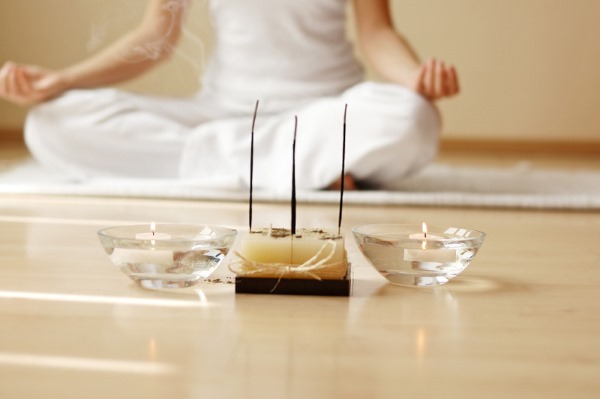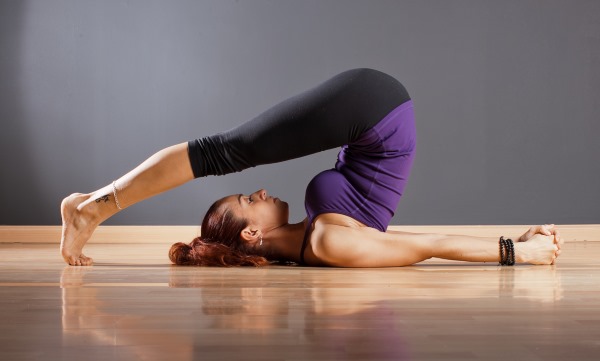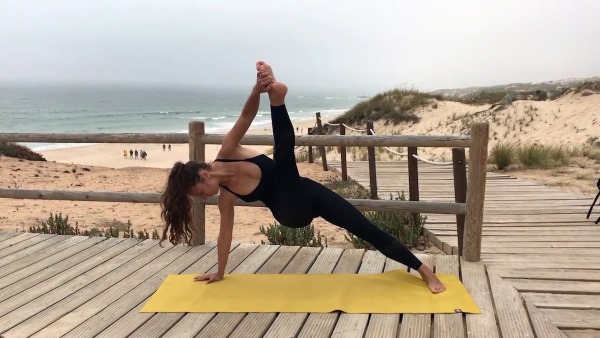Contrary to the opinion of many, meditation is not a difficult process at all, and everyone can practice it even at home. There are tons of useful tips for beginners, which are also included in this article. Regular meditation practices have a tremendous positive impact on a person's overall well-being. This issue will be discussed in more detail below.
What is meditation
One of the most common myths about meditation is that it involves sitting with your eyes closed, legs crossed, and a pensive face. In fact, meditation is a deeper and broader concept. Trainees in this business define it as complete control over their thoughts, awareness of their body and mind as a whole.
It is very difficult to describe meditation without first experiencing it. It can be compared to serenely watching the sunset or quietly listening to the birds in the forest. This is a special feeling of harmony and awareness. Meditation is an internal dialogue with oneself, a return to a state of calmness and, as if, detachment from the outside world with all its problems and difficulties.
Why is meditation necessary?
Meditation for beginners at home is an easy and rewarding process. It should be practiced daily for about 5-20 minutes. Meditation is not necessary to relax - this is absolutely not the main goal. Meditation is needed to improve concentration and awareness. It helps to sort out your own thoughts and easily solve life problems.

In today's world, there are too many stressors that distract from the daily routine and create unpleasant situations.
In order to always remain calm and make informed, smart decisions, you need to be aware and understand what is really important and meaningful in this life. This is where meditation helps. In addition, it has many positive effects on human physical health, brain and nervous system function.

 Don't miss the most popular column article: Body drying for girls. Training program, detailed nutrition menu for a month by day.
Don't miss the most popular column article: Body drying for girls. Training program, detailed nutrition menu for a month by day.Benefits of Meditation for Beginners
Meditation for beginners at home provides invaluable benefits to emotional and physical health. In addition, its influence has already been very thoroughly studied by modern medicine and is supported by scientific data and facts.
The main benefits of meditation are:
- Helps relieve stress. Meditation has a positive effect on the brain centers that are responsible for the production of cortisol, the stress hormone. Regular practice helps not only to reduce the level of anxiety and immediate negative reactions to stressful situations, but also to react more calmly to constantly incoming difficulties. Thus, a person engaged in meditation can control their emotions much better, not get frustrated and not express keen feelings.On the contrary, he will take a comprehensive approach to the problem, look for positive aspects in everything and try to offer a rational solution.
- Relieves depression and other mental illnesses... In 2014, researchers from the University of Baltimore conducted a study aimed at identifying the relationship between meditation practices and depression. A group of 20 people began to meditate every day for 15 minutes, and after a week, the subjects talked about positive changes in their perception of the world. Thus, meditation can be used as one of the means in the treatment of depression or other mental illnesses. It acts as a natural and essential antidepressant.
- Relieves tension from pain. Many people suffer daily from aching headaches or problems with the back, joints, muscle pain after intense exercise. Scientists from the Medical University of Boston conducted a study that proved that after 3-4 days of meditation, pain decreases and gradually disappears altogether. Meditation affects the subconscious ability to perceive reality, and gradually a person begins to react in a completely different way to pain and learns to control it.
- Increases gray matter in the brain. Gray matter is precisely that part of the nervous system, thanks to which a person can think, think and adequately perceive reality. Gray matter is responsible for concentration, the ability to memorize and reproduce any knowledge, intellectual data. It dies off due to excessive drinking, smoking and stress. Meditation helps to restore gray matter cells. With the help of it, the brain really starts to work faster, remembers information better, in general, meditation makes a person smarter.
- Slows the progression of Alzheimer's disease in old age. An experiment was conducted at Wake Forest University in North Carolina in 2011. Scientists recruited a group of people over 58 years old who showed the first signs of senile diseases - Alzheimer's, dementia. For 2 years, the elderly have been doing daily meditation sessions. According to the results of the study, it was found that the brain activity of the subjects was greatly increased, the reaction, the speed of thought and memory improved. Thus, meditation helps to remain mindful even at an older age.
Preparation for meditation
Meditation for beginners at home does not require very difficult and impossible preparation. However, it is worth worrying about a number of conditions that must be created for a successful session. In most cases, it is due to improper preparation, choice of place and time that people have an unpleasant experience of the first meditation, as a result of which they give up this occupation.
In order to be able to focus, concentrate on your own thoughts, let go of the outside world and fall into a "trance", it is important to create a special atmosphere.
A place
The main role in the quality of meditation practices is played by the place where they are held. Organizing a pleasant, suitable space can be done easily at home.
To do this, you need to adhere to the following principles:
- Purity and simplicity... The place for meditation should not be littered with extraneous and unnecessary things. It is best to highlight a certain corner of an apartment or house, clean it of all unnecessary things and always keep it clean.
- Privacy... It is best if the place for practice is in a secluded corner, where family members or extraneous sounds will not disturb. It is important that there is peace and quiet around.
- Shine... On a subconscious level, a person is always drawn to the sun and light. Therefore, if the place for meditation sessions is located right in front of a window or just in a light room, then the process will bring even more benefits, and you will want to return to the "place of power" again and again.
Time
The best time to meditate is in the morning.Then, when the human brain is still half asleep, and the body is filled with morning energy, there is the greatest chance that it will be possible to get to the very depths of consciousness.
In addition, many practitioners of daily morning meditation assure that this process sets a certain bar for the whole day, the mood becomes more positive, and things are solved easier and faster, since the brain feels calm, peaceful and filled with strength.
clothing
Natural lightweight fabrics are best suited for meditation sessions. You should choose silk, cotton or high-quality viscose. Clothing plays an important role, since it transfers a certain energy to the body - natural fabrics land a person, soothe, and synthetic (such as polyester) or very rough (wool, velvet) convey a negative aura and make thoughts heavier.
Music
The use of music during meditation is a controversial issue. Some people think that it is worth practicing in absolute silence, concentrating on your own thoughts. Others like to listen to calm compositions to create a special atmosphere. In any case, it is better to choose music as neutral as possible, not distracting from the process.
These can be sounds of nature - the sound of the forest, birdsong, the murmur of water, or special compositions created for meditation and yoga. They usually consist of the sounds of traditional Buddhist musical instruments - gong, kanjira, tampura, Tibetan singing bowl.

 Don't miss the most popular column article: Glutamic acid - what it is, why and how it is used in sports, bodybuilding.
Don't miss the most popular column article: Glutamic acid - what it is, why and how it is used in sports, bodybuilding.Incense
Most people have an actively developed sense of olfactory memory, and certain smells can be mentally returned to some moments in life. The use of aromatic oils, candles and incense has a beneficial effect on the meditation process. It is better to light them 20-30 minutes before the start of meditation, so that the room is filled with aromas.
The positive property of incense is also that they create a kind of individual ritual that is unique for each person. Therefore, over time, there is an awareness of meditation as a purely personal process.
How to start meditation
Meditation for beginners at home should be as simple and straightforward as possible. Otherwise, a person will have the opinion that this process is very difficult and requires a lot of time. For beginners, the easiest way to meditate is sitting in a comfortable position. It is worth starting with 5 minutes a day and gradually increase the time.
It is believed that the optimal time for meditation is 11 minutes. It is at the 11th minute that a person's consciousness is fully revealed, and he is able to immerse himself as deeply as possible in his thoughts. In advance, you need to ventilate the space and, if you wish, light candles or turn on aroma gadgets.
Beginners can also practice walking meditation. Its meaning is to distribute the breaths in and out by the number of steps. For example, inhale and exhale for every 5 steps.
Meditation at home
It is very easy to organize meditation at home, for beginners it will not be difficult. You can use the following table to monitor your progress and track the duration of each session, lengthening it over time.
It is designed for 10 days. During this time, you can easily come to the desired meditation time - 11 minutes, and then try to increase it to at least 15 minutes a day.
| 1 day | 5 minutes |
| 2 day | 5 minutes |
| Day 3 | 6 minutes |
| Day 4 | 7 minutes |
| Day 5 | 7 minutes |
| 6 day | 8 minutes |
| Day 7 | 9 minutes |
| Day 8 | 9 minutes |
| Day 9 | 10 min |
| Day 10 | 11 minutes |
Pose
In the process of meditation, the posture of the body plays the role of support - it should not interfere with the main thing - unity with thoughts and inner feelings. Therefore, it is important that the very being in a certain position does not expend a large amount of energy, which can go into dialogue with your inner world.There are a huge number of different variations of postures and asanas for meditation.
However, for beginners, the most suitable will be the simplest one - seated. To do this, sit on a flat surface (you can put a not very soft pillow) and cross your legs. The pose should be open, the lungs should not be compressed, as this can interfere with calm and even breathing. The position of the body must be brought to a relaxed state, the muscles should not be strained.
It is important to ensure that your legs do not become numb during the session, otherwise it will be an additional distraction.
To do this, you need to try to sit like this in advance and find the most comfortable position. Over time, as meditation becomes a habit and becomes an integral part of your daily routine, you can try new interesting postures.
For example, the warrior pose (Virabhadrasana) or the camel pose. Such variations require a lot of skill and hard work on yourself and your body.
Eyes, hands, mouth
The whole body should be relaxed. Including eyes, hands, and mouth. If meditation takes place during the daytime, then it is better to close your eyes. However, if a person is in a dark room, then they can be left open and direct their gaze to one point, without being distracted by extraneous moments. The mouth should be closed during inhalation and slightly open during exhalation.
Do not purse your lips too much. If the practice is carried out in a seated position, then hands can be placed on your knees or in front of you. In any case, the main thing is the absence of physical stress in any part of the body. Otherwise, this factor can play a negative role in the resulting effect of meditation.
How to straighten your back
While sitting on any surface, the main support of the entire upper body is the pelvis. The spine, ribs, neck, shoulders - everything rests on 2 protruding pelvic bones (they can be clearly felt while sitting on a hard surface). Therefore, it is necessary to evenly distribute the weight on these 2 areas. Then the body will come to a natural, even state.
The back will itself be in a relatively correct position - not bend or slouch too much. All muscles in the upper body will relax and will receive the same light load.
Another important point is the position of the head. It should not be tilted strongly downward and not thrown back, it is better to keep it straight - so that the gaze is directed to a point located directly at eye level.
Meditation techniques
There are about 3 thousand different meditation techniques. Reading a mantra, searching for your own “I” inside the mind, concentrating on “time and space”. At the initial stage, you can try all these and even more in order to find your technique and find maximum freedom and get as much benefit as possible. However, it is not at all necessary to dwell on just one type of meditation.
They can be combined with each other, constantly trying something new, finding interesting nuances, thereby better knowing yourself and understanding how the mind and thoughts work. A common opinion among practitioners of meditation sessions is that any technique of meditation is just a "key" to the original result, which is always the same.
After all, the main thing is to put aside external problems, all noise during meditation and focus on your own thoughts. Any technique, one way or another, leads to this state. But how do you choose the one for yourself?
According to the results of some studies, it has been found that people who are prone to visual perception of information are more suitable for imagining some pleasant pictures and images in their heads. Those who fantasize poorly have a different path - a sense of energy. It seems to pass through their bodies and feel like a tangible object.
Breath
During meditation, breathing should go through the stomach. You can imagine that there is a balloon inside it - when you inhale, it inflates, and when you exhale, it deflates.The basis for correct breathing is calmness and regularity. At first, it is better to count in and out to yourself. Example: inhalation is done in 5 slow counts, exhalation should be longer - 7-8 counts.
It is important that this happens naturally and naturally. It is also necessary to pay attention to the fact that breathing does not pass to the thoracic region. Scientists have found that chest breathing is characteristic of people in stressful situations - it is more intermittent and restless.
Sensations in the body
During inhalation, the body seems to be filled with energy, saturated, and exhaling, it is freed from all problems and unnecessary thoughts. This thought should be kept in your head during meditation, it will help you visualize your own thoughts and turn them into life.
In general, the sensations in the body should be light. After meditation, you usually feel empty in a good way, a surge of strength and a willingness to do something.
External object
Concentration on an external object is characteristic of Trataka yogic meditation. Its meaning is that at first a person with open eyes focuses on some physical external object.
For example, on a burning candle. This happens within 5-7 minutes. Next, you need to close your eyes and try to reproduce in your memory the image of this very candle in as much detail as possible. This meditation practice trains the skills of concentration, visualization and mindful memory.
Internal imaginary object
This meditation method is similar to the previous one. The only difference is that from the very beginning of the practice, a person must come up with or remember an object and focus his attention on it.
The peculiarity of such visualization practices is that a person should think only about this object and discard all extraneous thoughts in order to clear the mind and mind of all unnecessary and unnecessary.
Stream state
The essence of this practice is the awareness of oneself as an "observer" of one's own thoughts. It can be done in any position, with eyes open or closed. The bottom line is to observe, as it were, from the sidelines all the thoughts that appear in your head, and to distance yourself from them. Imagine that these are the thoughts of some other person, they are strangers.
This practice helps to become more conscious, and conducting it on an ongoing basis allows you to learn how to control your own thoughts and be able to find the very one or, conversely, interrupt unnecessary ones.
Beginner's mistakes in meditation
- Excessive effort. You do not need to constantly monitor your result, count the minutes and strain too much. Thus, meditation can become stressful. It is better to relax, stop expecting quick results and direct the vector of attention to your own thoughts. Then, over time, everything will come by itself.
- Very long sessions... Beginners tend to believe that the longer the meditation session, the more beneficial it is, which is an absolute lie. It is better to spend 5-10 minutes of meditation more productively and better than to force yourself to sit in one place for an hour.
- Incorrect posture. As mentioned earlier, the main thing is relaxation and simplicity. You should not try to perform meditations in very difficult positions, so as not to complicate your life. It's better to start small and get better and develop step by step.
Thus, meditation is an invaluable and essential process for everyone. Anyone can practice it at home. Meditation for beginners is simple and straightforward to perform.
The main thing is to always remember that the main goal of meditation is to learn to better understand yourself, your thoughts and desires, to be able to recognize the hidden meaning of being in the subconscious and always listening to yourself.
Article design: Anna Vinnitskaya
Meditation Videos for Beginners
Instructions to help us start meditating:














